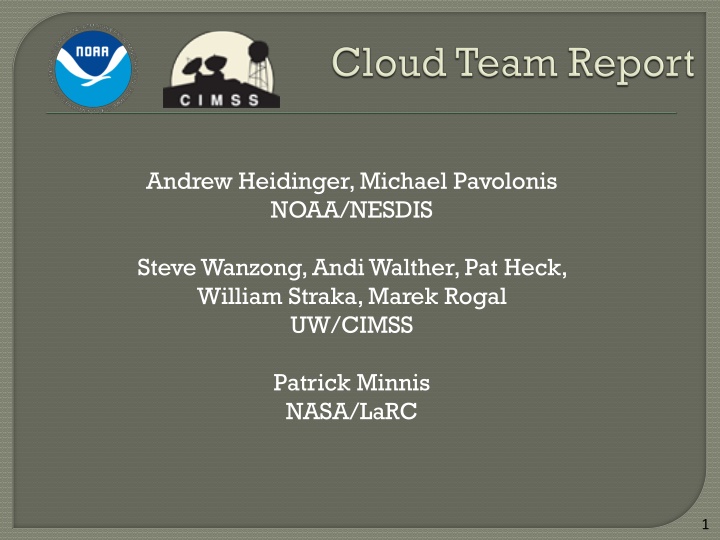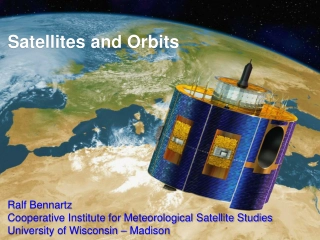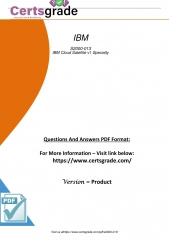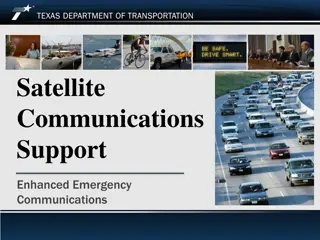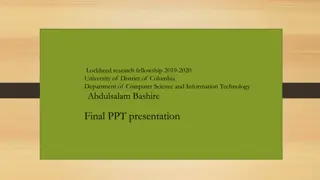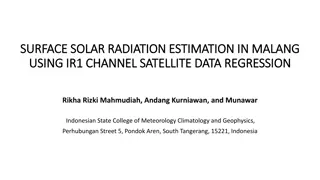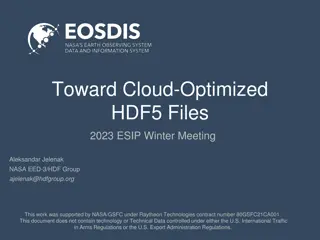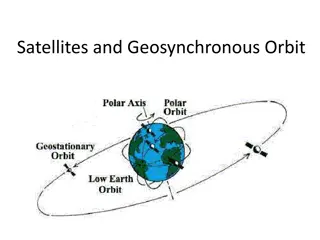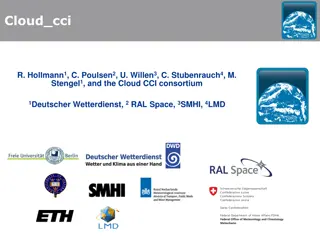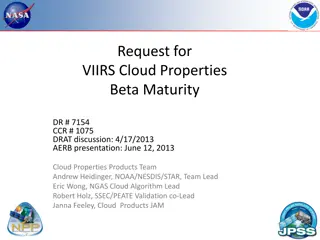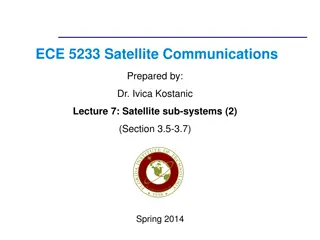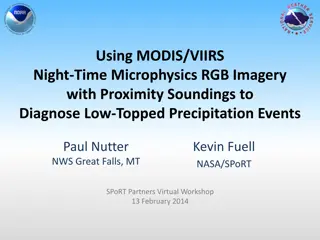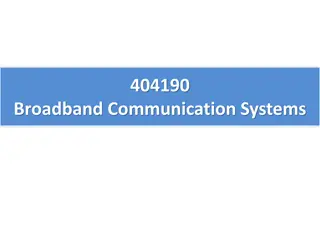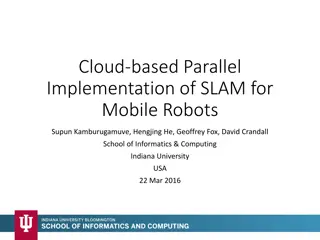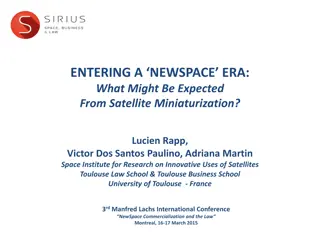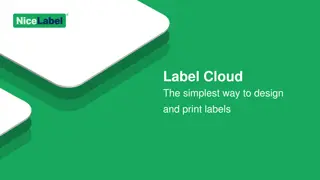Cloud Team Develops Algorithms for Satellite Data Analysis
Cloud Team has developed 5 algorithms for 10 products, focusing on various aspects such as cloud mask, optical properties, validation tools, and data usage. These algorithms are widely used, running across multiple sensors and applications, contributing to post-launch testing and product validation for satellite missions.
Download Presentation

Please find below an Image/Link to download the presentation.
The content on the website is provided AS IS for your information and personal use only. It may not be sold, licensed, or shared on other websites without obtaining consent from the author.If you encounter any issues during the download, it is possible that the publisher has removed the file from their server.
You are allowed to download the files provided on this website for personal or commercial use, subject to the condition that they are used lawfully. All files are the property of their respective owners.
The content on the website is provided AS IS for your information and personal use only. It may not be sold, licensed, or shared on other websites without obtaining consent from the author.
E N D
Presentation Transcript
Andrew Heidinger, Michael Pavolonis NOAA/NESDIS Steve Wanzong, Andi Walther, Pat Heck, William Straka, Marek Rogal UW/CIMSS Patrick Minnis NASA/LaRC 1
Enhancements Current Activities Validation Progress Road to GOES-R Post-Launch Test (PLT) and Post-Launch Product Validation 2
Cloud Team developed 5 algorithms for 10 products. Clear-sky Mask and Nighttime Cloud Optical Properties are no longer actively funded. Mask remains integral to many other products but feedback has dwindled. Height, Phase and Daytime Optical Properties are still supported since they are the most used. Validation tools and proxy data usage has expanded significantly. These algorithms are running on almost all sensors and finding use in many applications. 3
CLAVR-x and GEOCAT continue to run AWG cloud algorithms on a growing list of sensors. (Enterprise?) Cloud Mask applied to GOES-13 Sounder. Goes Sounder provides most ABI IR bands over USA in Geo. Majority of GOES-R AWG Cloud Algorithms have also made it into NESDIS Ops via CLAVR-x/GSIP. At CIMSS, these are run in real-time This data is available via ftp, CIMSS- LDM, and ADDE. Images are served through Google Maps & Earth and AWIPS (selected products). Current geo sensors: GOES-I/L,GOES- M/P, GOES-Sounder, MSG, COMS and MTSAT Current leo sensors: AVHRR/3, MODIS and VIIRS 5
Mask: Probabilistic logic implemented, users can pick final threshold for clear/cloudy. Phase: Expansion to all IR channel combinations. ACHA: Full off-diagonal covariance matrices, generate optical depth and particle size, and true physical boundaries (top and base). Supports 6.7,8.5 11,12,13.3 m channels. DCOMP: Extended to 1.6 and 3.9 micron channels. New logic to improve over-snow performance. Use of ACHA optical depth as constraint for thin cirrus clouds. 6
Mask, phase and height are served directly to the OCONUS and AWC PG Experiments. Cloud Optical Depth and Particle Size were served during the AWC Winter Experiment to support the Icing Product. Cloud products also support other applications. Example ACHA display in AWIPS used at AWC (Amanda Terborg) 8
CIMSS Proxy Data Team Generates Simulated ABI Data using WRF-Chem. Retrieved Scene on right is Hurricane Sandy. Truth GEOCAT modified to ingest Simulated ABI Data and allows for AWG Product Generation. Model cloud profiles and selected products mapped to same resolution which enables direct comparison.
Model provides profile of cloud hydrometers. We can verify our algorithms assumptions on vertical structure and the impact on CTP performance. Image on left shows comparison of ABI CTP to model CTP where we compute CTP at level where optical depth into cloud = 0.1 (near true top). Image on right shows same comparison but model CTP computed where optical depth into cloud = 4 (deep into cloud or top of lower cloud layer).
AWG Cloud Products Appear in the UCAR Field Catalogs for: CONTRAST 2014 DC3 2012 TORERRO 2011/2012 Data Served to CONTRAST from COMS AWG Cloud Products also provided to HS3 2013 SAAWSO 2012/2013 CalNex - 2011 11
Cloud Height ACHA Cloud top heights were in excess of 50,000 ft. so the decision was made to divert the Global Hawk. Diversion cost opportunity to investigate inner core of the tropical cyclone. Questions were quickly raised as to whether the Global Hawk needed to divert during this flight.
AWG Cloud Products will be served to the DOE SunShot Program in 2014. SunShot s Goal: improve solar power forecasting NOAA partnering with DOE. Two teams funded: NCAR, IBM Cloud AWG supporting teams with GOES real-time 1km cloud products. 1 km / 1 minute data from GOES-14 SRSOR being used for experiments. 13
Cloud Team collaborates with SSEC Co- location Team (Holz/Quinn) SSEC runs a Real-Time SEVIRI Validation Page using MODIS and CALIPSO.. Calipso Track All clouds Thin cirrus One Month of SEVIRI vs CALIOP 15
SSEC page also compares NASA MODIS to AWG Cloud Products from SEVIRI. Images show Cloud Optical Depth. NASA MODIS Cloud Optical Depth AWG/SEVIRI NASA/MODIS AWG SEVIRI Cloud Optical Depth 16
AWG Cloud Team continues to participate in the EUMETSAT sponsored CREW Workshops. 4th CREW is in March, 2014 CREW enables direct comparison of cloud products from multiple agencies. Allows us to track our relative performance and learn or share new ideas with the community. Image on left is a standard CREW analysis applied to AWG. 17
One independent validation source for daytime cloud products is microwave-based Liquid Water Path (LWP) product from AMSR-E. LWP is the link of optical properties to a quantitative water mass. Validation shows that we meet the specs although different spatial resolution, required filtering for cloud masking rain, ice clouds in MW data and temporal mismatch complicate the effort. AWG/SEVIRI Liquid Water Path AMSR-E Liquid Water Path 18
We intend to continue to use space-borne Lidar from the Earth-Care mission which scheduled for 2016. We hope to continue work with the field campaigns since it provides insight from other non-satellite experts. We hope there is a CREW-like Workshop for GOES-R. Application specific validation/tailoring is most important for product success. 20
If funded continues to go down, the time is now to fund training for AWG products. Hard to do this years after the algorithm developer is gone. Availability to serve Real-Time data from STAR and its CI s is excellent and needs to be supported (PG?). Climate researchers remain a big user of cloud products. NCDC CDR program would only support transition of mature climate data records into the archive. Gap in support for developing climate records. 21
JPSS Cal/Val teams were formed to provide independent assessments. Is this planned or do we continue to validate our own algorithms? Many groups run our algorithms outside of our team. Algorithm support becomes challenging and falls outside of PSDI. (CSPP is a potential example of this issue.) What is our role in algorithm updates? The IDPS/ADL model is not optimal. Will NESDIS pursue independent processing similar to the NOAA Unique Products on NPP/JPSS? 22
The AWG Cloud Algorithms are the basis for the JPSS-RR Algorithm Continuity Cloud Algorithms being implemented into the NOAA- AIT FRAMEWORK. Lunar Reflectance VIIRS Cloud Op. Depth Some AWG Cloud algorithms also modified to work with lunar reflectances from VIIRS. This has lead to new insight into our nighttime performance. VIIRS+CrIS allows for good ABI spectral consistency. We are using SSEC PEATE data and running AWG ACHA on VIIRS + CrIS. 23
AWG Cloud Algorithms have been ported to the current suite of sensors, are running in real-time and finding application in many areas. AWG is big success story for the NESDIS cloud products. Much of the current User Engagement (PG and real-time distribution) is subsidized by AWG. Is that consistent with AWG s mandate? We have had no Harris contact so we are wondering what the future responsibility is for us. Our funding levels can t sustain the whole team. 24
Overall performance remains similar Improved inversion technique removes distinct a-priori peaks in distribution Improved atmospheric correction lead to slight differences particular at higher values 26
ACHA cloud heights for the ER-2 over-flight of Emily. ACHA cloud heights are the plotted squares, with the NASA ER-2 flight level (black line) and 10,000 ft. margin (grey shading) are also plotted.
